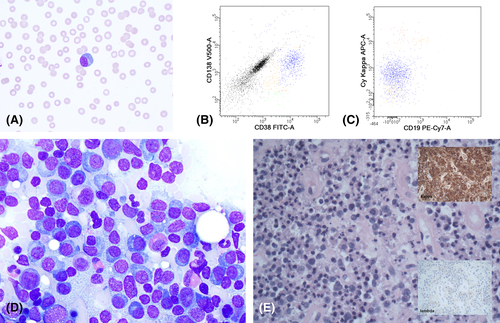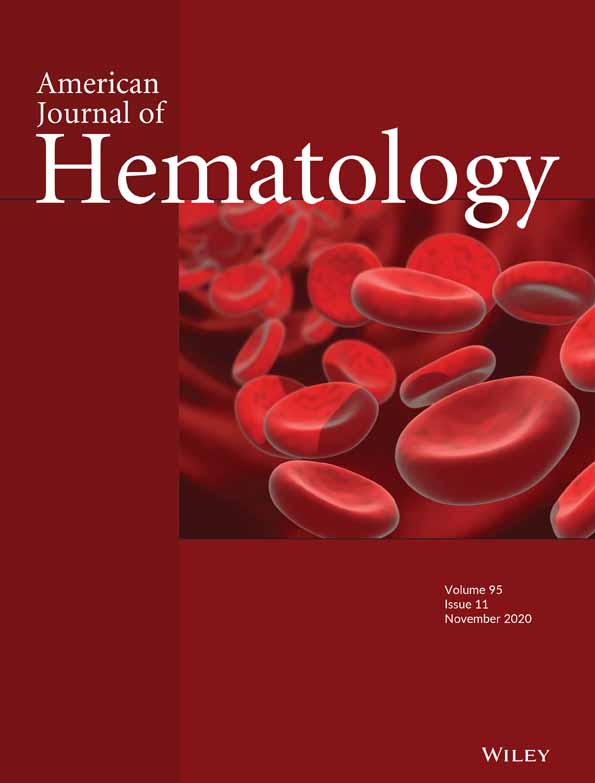Primary plasma cell leukemia mimicking a Pancoast tumor
A 56-year-old non-smoking man was referred to the orthopedic surgeon because of a 5-month history of worsening pain and swelling of the left shoulder. Physical examination revealed a mass around the left shoulder. Magnetic resonance imaging and computed tomography (CT) demonstrated a large Pancoast tumor with rib destruction and invasion of the chest wall and soft tissue (Figure 1A,B), showing hypermetabolic activity on FDG positron emission tomography (PET)-CT (Figure 1C). Peripheral blood (PB) examination showed hypercalcemia, anemia, thrombocytopenia, and a normal leukocyte count (8.3 × 109/L). More thorough examination of PB smears illustrated aberrant plasma cells with nucleoli (Figure 2A; May-Grünwald-Giemsa (MGG) stain, original magnification ×1000). Flow cytometry detected a clonal plasma cell population of 23%, positive for CD56 and negative for CD19 (Figure 2B,C). The bone marrow aspirate smear identified nearly complete replacement of normal hematopoietic cells by clonal plasma cells (Figure 2D; MGG stain, original magnification ×1000). Serum free light chain kappa level was 732.5 mg/L. Further cytogenetic exploration showed t(4;14)(p16;q32). All findings were consistent with primary plasma cell leukemia (pPCL).


Left apical lung tumor biopsy demonstrated malignant cells that stained positive for CD138, CD38, CD56, and kappa light chains (Figure 2E; hematoxylin and eosin stain, original magnification ×200). Cells were negative for cytokeratin AE1/AE3, CD3, CD20, CD30, ALK1, EBV, PAX5, and CyclinD1. The patient started treatment with carfilzomib, lenalidomide and dexamethasone (KRd) which induced a complete response after four courses with regression of the pulmonary mass. Thus, KRd is a major treatment regimen in multiple myeloma1 and currently evaluated as induction therapy in a phase two study in pPCL.
Apical lung tumors are usually non-small-cell lung cancers, also known as Pancoast tumors.2 Other malignancies than primary lung cancer should always be considered in the differential diagnosis, and a histopathological diagnosis is essential for management of the patient.
CONFLICT OF INTEREST
None.
Open Research
DATA AVAILABILITY STATEMENT
Data sharing not applicable to this article as no datasets were generated or analysed during the current study




